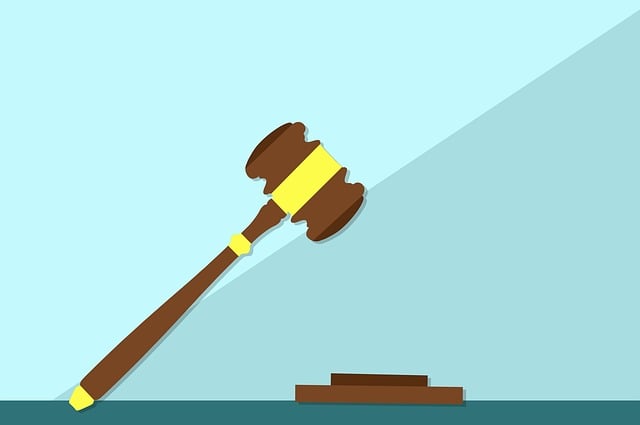Securities class actions seek justice for investor groups harmed by misstatements or omissions, governed by securities laws. Overcoming the Challenges in Meeting Burden of Proof in Court is crucial, as plaintiffs must prove wrongful conduct and its economic impact through comprehensive investigations. Complex financial transactions and defenses make this difficult, requiring meticulous evidence gathering, expert testimony, and strategic legal argumentation to secure justice and deter fraud.
“Securities class actions are complex legal battles aimed at protecting investors from fraudulent practices. This comprehensive guide, ‘Understanding Securities Class Actions,’ delves into the intricacies of this process. We explore the legal framework governing proof requirements and uncover common challenges faced when presenting evidence.
Through practical strategies, we offer insights on best practices to overcome evidentiary hurdles, ensuring a stronger case. Given the stringent burden of proof in court, understanding these dynamics is crucial for successful class action litigation.”
- Understanding Securities Class Actions: A Comprehensive Overview
- The Legal Framework: Rules and Regulations Governing Proof Requirements
- Common Challenges in Presenting Evidence for Class Action Cases
- Best Practices: Strategies to Overcome Evidentiary Hurdles
Understanding Securities Class Actions: A Comprehensive Overview

Securities class actions are legal battles aimed at redressing wrongs committed against a large group of investors, often involving complex financial transactions and intricate corporate practices. Understanding this process is crucial for both potential plaintiffs and defendants, as it dictates the rights and responsibilities of all parties involved. These cases typically emerge from alleged violations of securities laws, such as misstatements or omissions in disclosure, which can lead to significant financial losses for investors.
One of the key challenges in securities class actions is meeting the burden of proof in court. Plaintiffs must demonstrate that the defendant engaged in wrongful conduct and that this conduct directly led to the economic harm suffered by the class members. This involves a meticulous investigation into all stages of the investigative and enforcement process, from gathering evidence and analyzing financial records to presenting compelling arguments before jury trials. For his clients, securing justice requires a deep understanding of market dynamics, regulatory frameworks, and legal precedents, ensuring that every step is taken to protect their interests and achieve favorable outcomes.
The Legal Framework: Rules and Regulations Governing Proof Requirements

The legal framework governing securities class actions is replete with rules and regulations designed to ensure fairness and protect investors. However, one of the significant challenges in this process is meeting the burden of proof in court. Securities fraud cases often involve complex financial transactions and intricate corporate structures, making it difficult to establish liability conclusively. The onus is on plaintiffs to present compelling evidence, including detailed records, expert testimony, and damning communications, to prove that defendants engaged in fraudulent activities.
In high-stakes cases, particularly those involving white-collar defense strategies aimed at avoiding indictment, the bar for proof requirements can be stringent. Lawyers must navigate a labyrinth of regulatory provisions and precedent to build a solid case. This involves meticulously piecing together evidence, understanding the nuances of financial markets, and addressing the potential defenses that corporations and individuals may employ. Successfully navigating these challenges is crucial in securing justice for investors and sending a clear message about the consequences of securities fraud.
Common Challenges in Presenting Evidence for Class Action Cases

Presenting a compelling case for securities class actions can be fraught with challenges, particularly when it comes to meeting the burden of proof in court. One of the primary hurdles is the sheer complexity and volume of evidence required. Given the nature of such cases, where many investors are affected across different jurisdictions, compiling comprehensive and coherent documentation can be a daunting task. Legal professionals must sift through vast amounts of financial data, legal documents, and market trends to identify key patterns and misrepresentations that form the basis of the class action.
Moreover, securing winning challenging defense verdicts in these cases is often an unprecedented feat due to the intricate nature of securities law and the complex analysis demanded. The bar for proving fraud or negligence is high, and establishing a direct causal link between the defendant’s actions and the plaintiffs’ losses can be tricky. Class action lawyers must navigate a labyrinthine legal landscape, ensuring every piece of evidence is meticulously presented to support their argument for complete dismissal of all charges or an unprecedented track record of favorable outcomes.
Best Practices: Strategies to Overcome Evidentiary Hurdles

Overcoming evidentiary hurdles is a significant challenge in securities class actions, where the burden of proof lies heavily on plaintiffs. Best practices involve meticulous document collection and preservation, ensuring all relevant information is gathered from various sources within the respective business. This includes financial records, communications, and any data that could potentially support claims of wrongdoing.
Plaintiffs’ attorneys should also focus on creating a comprehensive narrative linking the defendant’s actions to the alleged harm. Strategic witness selection and thorough examination can help in presenting a compelling case. By employing these strategies, plaintiffs can navigate the Challenges in Meeting Burden of Proof in Court, increasing their chances of winning challenging defense verdicts for his clients.
Securities class actions require a deep understanding of both complex financial matters and legal procedures. Navigating the intricate web of rules and regulations, as outlined in this article, is essential for successful prosecution. While presenting evidence in these cases comes with unique challenges, such as the demanding burden of proof in court, adopting best practices can significantly enhance the likelihood of a positive outcome. By adhering to these strategies, legal professionals can effectively overcome evidentiary hurdles and secure justice for affected investors.






